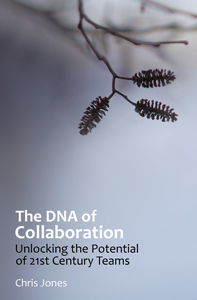The 21st century has a breakneck feel, and it’s difficult for organizations to keep up. We try to focus on the work in front of us, but our attention is continually flooded with changing priorities, better options and new ideas. The sum total of our collective global knowledge base taunts us, always just a few clicks away.
How can individuals and teams be expected to function? How can organizations thrive?
Amid this torrent, notions of complexity and agility are intriguing. Could they represent better ways to navigate the flood of ideas? Most experts and academics say ‘yes’. Unfortunately, the words get dropped into meetings and board rooms like all the latest buzz words. Yet both concepts hint at important, underlying themes:
- Complexity is a paradigm shift in how we see the world, less focused on empirical cause and effect, more on networks of interdependent actors that can learn and co-create organically; it’s where the whole can’t be predicted by the sum of the parts; where initial conditions and critical mass play key roles; where new thinking, under the umbrella of emergence, marks new pathways for adaptation, aka continuous improvement
- Agility is a paradigm shift of it’s own, whereby organizations become more nimble in response to change; trust regains center stage; adaptation becomes a critical skill; incremental approaches open new ways to solve problems
Changes like these are at once exciting, and daunting. Our ability to work together and learn together is at the core in our #futureofwork. To me, complexity and agility are integral aspects of how work needs to get done in a highly interdependent world. So I think it’s critical that we understand these concepts, embrace them, and put them to work.
I just hope we’re not taking on these challenges too late. Let’s discuss.
In our 8/25/18 #orgdna #globalchat, we’ll examine agility as an outcome, through a complexity lens. To lay a foundation, we’ll focus first on key initial conditions:
- Q1. Trust Networks. Why is trust needed for collaborative dialog to emerge? To enable agility?
- Q2. Agile and the Price of Speed. Can a simple methodology help organizations move faster? Within what constraints?
- Q3. Small Wins. What makes notions like “minimum viable product” so essential?
- Q4. Adaptive Governance. Can there be oversight without bureaucratic grid lock? What is the new role of leaders? Do we still need Kotter-style coalitions?
- Q5. Making Sense of Complexity. Why is this a critical 21st century skill? Why are we so late to embrace it?
- Q6. A Collaborative Culture. Why is an organization’s collective mindset an important initial condition? Is this happening too slowly to allow the emergence of organizational agility?
Lots to talk about. And because it will take time to unfold, it’s going to be a journey.
This outline will inform our follow-on conversations. We’ll continue to unpack the #futureofwork through the lens of social complexity each month, now on 3rd or 4th Saturdays, from 1-3pm GMT, i.e., 9-11am EDT. Stop in at any point during the 2-hour conversation. Can’t make that time? Feel free to tweet thoughts/inputs/comments using hashtags #orgdna #globalchat, or post comments to this blog.
It’s been a great exchange so far. We’re 6-years in, and gaining momentum. Transcripts of our conversations abound.
We hope you’ll join us for the next one. See you online!
— Chris Jones – @sourcepov – Charlotte NC
How does a Twitter Chat work? We recommend a streaming app like TweetDeck. Just append #orgdna to your tweets adding #orgdev #agile #agility #complexity and/or #futureofwork to specific tweets, as relevant, to expand the thread. Sometimes we’ll chat in the #orgdna stream in real-time, like a flash mob, with insights just popping up. But for the in-depth discussion, join us at the appointed hour on Twitter.
What is #orgdna? It’s a self-selecting community of #orgdev thinkers, discussing collaborative aspects of the organization since 2012.
What is a Global Chat? This may be the first one. Many challenges facing the modern organization are global in nature, or in impact. I’m hoping #orgdna can make #globalchat a more frequent and welcome exchange, with increasing scope of participation and value.
Do we have a Master Agenda? Yes, but it’s evolving, as we learn more. We’ve captured many of our ideas and themes to date using Coggle. Our roadmap is posted on this site (CC4-BY-SA). Have a look, and share your thoughts.








